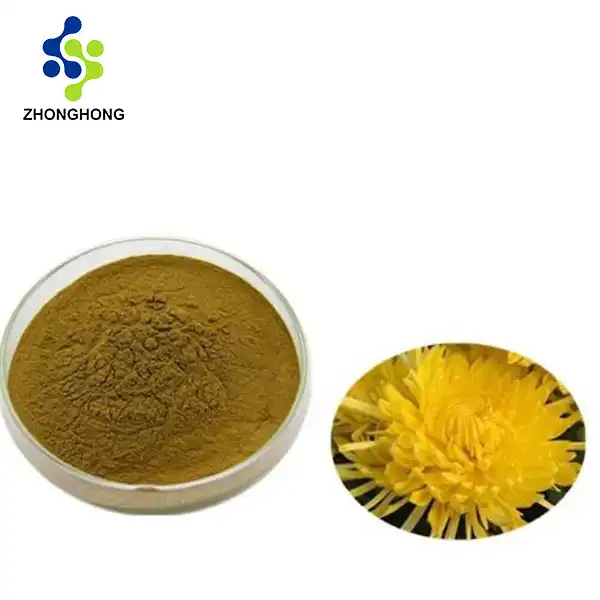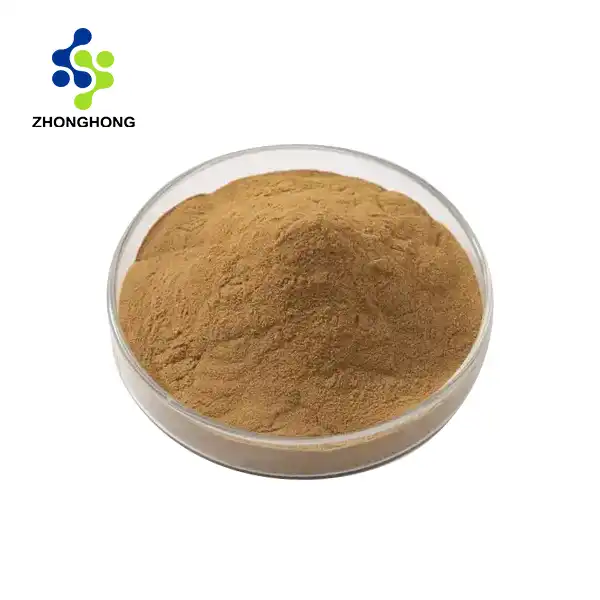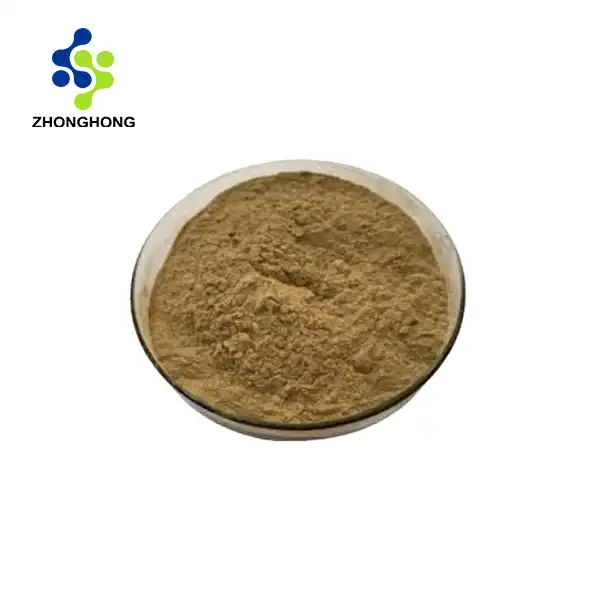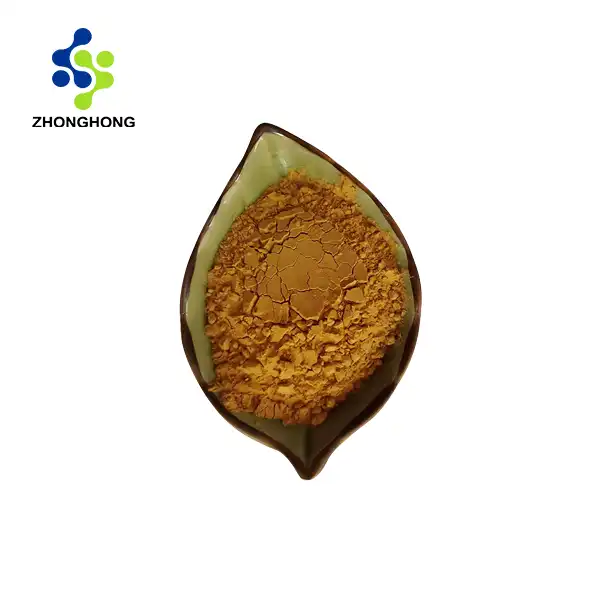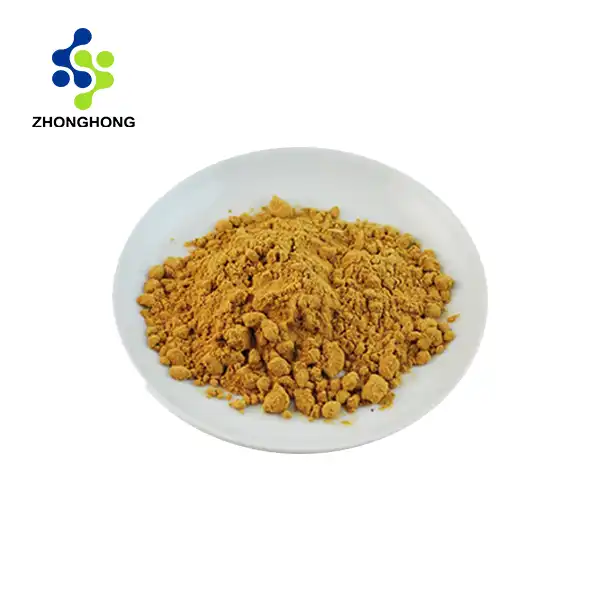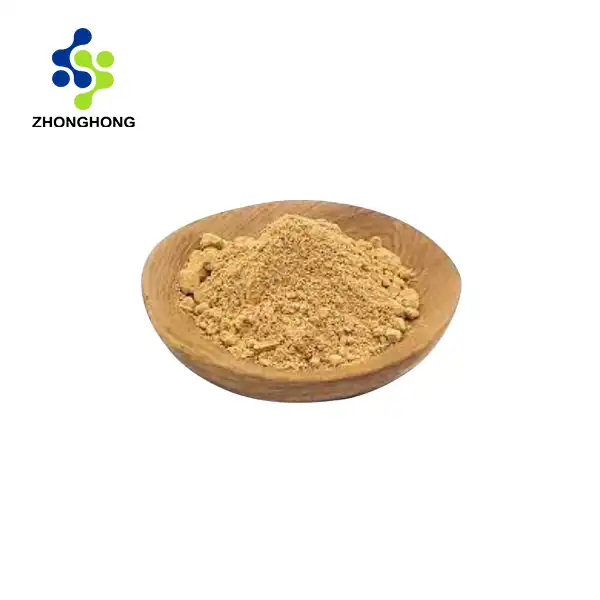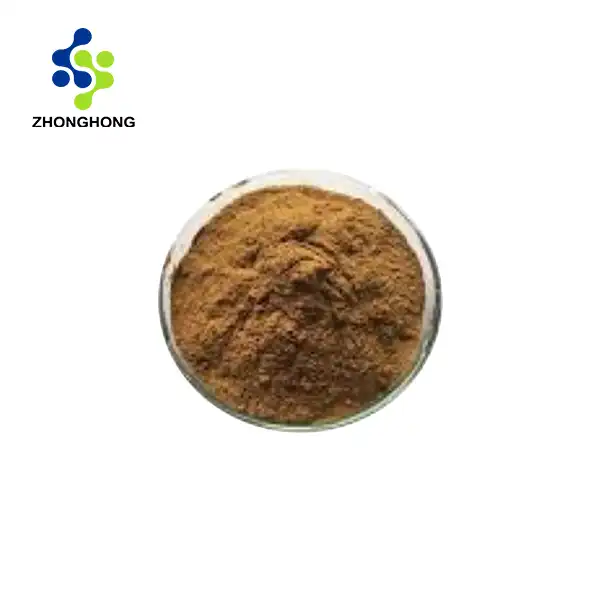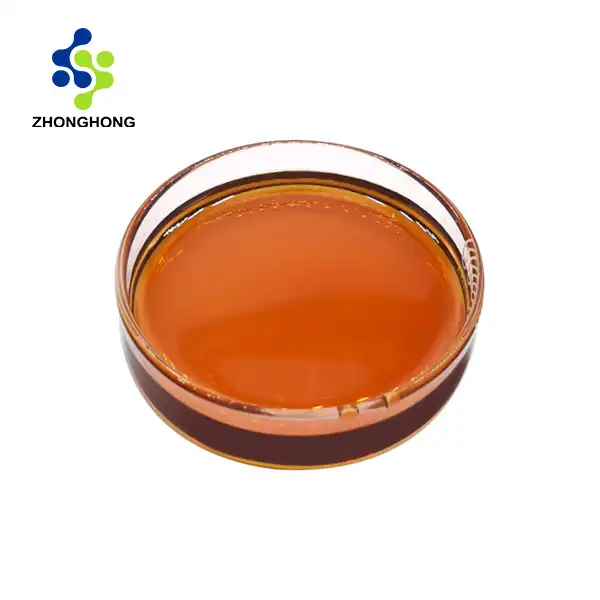The Science Behind Witch Hazel Extraction
Chemical Composition of Witch Hazel Bark
Witch hazel bark is a complex matrix of various chemical compounds that contribute to its therapeutic properties. The bark contains a rich array of tannins, predominantly hamamelitannin and gallic acid. These compounds are responsible for the astringent and anti-inflammatory effects of witch hazel. Additionally, the bark houses flavonoids such as kaempferol and quercetin, which possess antioxidant properties. Proanthocyanidins, another group of polyphenols, are also present and contribute to the extract's ability to strengthen blood vessels and reduce inflammation. The presence of volatile oils, including carvacrol, eugenol, and hexenol, imparts the characteristic scent to witch hazel extract and may contribute to its antimicrobial properties.
Extraction Mechanisms and Solvent Selection
The choice of extraction method and solvent significantly impacts the composition and quality of the final witch hazel extract bulk product. Steam distillation is often preferred for its ability to extract volatile compounds without the use of chemical solvents. This method is particularly effective in capturing the essential oils present in the bark. On the other hand, solvent extraction using ethanol or a mixture of ethanol and water can yield a more comprehensive extract, including both volatile and non-volatile compounds. The polarity of the solvent plays a crucial role in determining which compounds are extracted. Ethanol, being amphipathic, can dissolve both polar and non-polar compounds, making it an effective solvent for extracting a wide range of bioactive components from witch hazel bark.
Optimizing Extraction Efficiency
To maximize the yield and quality of witch hazel extract, several factors must be optimized. The particle size of the bark influences the extraction efficiency, with smaller particles generally allowing for better solvent penetration and faster extraction. However, excessively fine particles can lead to filtration difficulties. Temperature control is another critical factor, as higher temperatures can increase extraction rates but may also lead to degradation of heat-sensitive compounds. The extraction time must be carefully balanced to ensure complete extraction without compromising the stability of the extracted compounds. Advanced techniques such as ultrasound-assisted extraction or supercritical fluid extraction can further enhance efficiency by improving solvent penetration and reducing extraction times.
Industrial Applications and Quality Control
Scaling Up for Commercial Production
Transitioning from laboratory-scale extraction to industrial production of witch hazel extract bulk requires careful consideration of equipment design and process parameters. Large-scale extractors, often in the form of percolators or continuous extraction systems, are employed to handle significant quantities of bark. These systems must be designed to ensure uniform solvent distribution and efficient mass transfer. Heat exchangers and condensers are integrated to manage temperature control and solvent recovery. The scale-up process also necessitates the implementation of automated control systems to maintain consistent extraction conditions and product quality. Additionally, considerations for waste management and solvent recycling become paramount in industrial settings to ensure economic viability and environmental sustainability.
Quality Assurance and Standardization
Maintaining consistent quality in witch hazel extract production is crucial for meeting industry standards and regulatory requirements. Quality control measures begin with the sourcing of raw materials, ensuring that the witch hazel bark is of appropriate species, age, and quality. Throughout the extraction process, key parameters such as solvent composition, temperature, and extraction time are closely monitored and documented. The resulting extract undergoes a battery of analytical tests to verify its composition and potency. High-performance liquid chromatography (HPLC) is commonly employed to quantify key components such as hamamelitannin and other polyphenols. Spectrophotometric methods may be used to assess total tannin content. Microbial testing ensures the extract meets safety standards for use in cosmetic and pharmaceutical applications. Standardization of the extract to a specific tannin content or other marker compounds helps ensure batch-to-batch consistency.
Regulatory Compliance and Safety Considerations
The production of witch hazel extract bulk for commercial use must adhere to stringent regulatory guidelines. In the United States, the Food and Drug Administration (FDA) oversees the use of witch hazel in over-the-counter drugs and cosmetics. Manufacturers must comply with Good Manufacturing Practices (GMP) to ensure product safety and quality. This includes maintaining clean and controlled production environments, implementing robust quality management systems, and conducting regular audits. Safety assessments of the extract, including tests for potential contaminants such as heavy metals or pesticide residues, are essential. Additionally, proper labeling and documentation of the extract's composition and intended use are required to meet regulatory standards. For exports, compliance with international regulations such as the European Union's REACH (Registration, Evaluation, Authorization and Restriction of Chemicals) may be necessary.
Innovations in Witch Hazel Extraction Technology
Green Extraction Methodologies
The push towards additional economical and harmless to the ecosystem rehearses has prompted developments in witch hazel extraction advancements. Green extraction approaches intend to diminish dissolvable use, limit energy utilization, and abatement squander age. Supercritical liquid extraction involving carbon dioxide as a dissolvable has acquired consideration for its capacity to create high-immaculateness extricates without the requirement for natural solvents. This strategy takes advantage of the extraordinary properties of supercritical CO2, which can enter the plant material actually and be effortlessly isolated from the concentrate by depressurization. Another arising strategy is microwave-helped extraction, which uses microwave energy to warm the dissolvable and plant material quickly and consistently. This can essentially lessen extraction times and energy utilization contrasted with ordinary strategies. Beat electric field extraction is one more encouraging innovation that utilizations short beats of high voltage to disturb plant cell films, upgrading the arrival of bioactive mixtures without the requirement for broad warming.
Bioengineering Approaches to Enhance Yield
Progressions in biotechnology offer new roads for further developing witch hazel extract creation. Hereditary designing strategies are being investigated to foster witch hazel plants with improved creation of wanted compounds. By distinguishing and possibly adjusting the qualities liable for tannin and flavonoid biosynthesis, making assortments with higher groupings of these significant components might be conceivable. Plant cell culture advances present another inventive methodology. By developing witch hazel cells in bioreactors under controlled conditions, it's feasible to deliver explicit accumulates of interest all year, autonomous of occasional varieties. This technique likewise considers the control of development conditions to upgrade the creation of target atoms. Also, chemical helped extraction procedures are being created, where explicit proteins are utilized to separate cell walls and delivery bioactive mixtures all the more productively, possibly expanding yields and diminishing the requirement for unforgiving extraction conditions.
Advanced Analytical Techniques for Extract Characterization
The improvement of refined scientific instruments has upset the portrayal and quality control of witch hazel extract. Super elite execution fluid chromatography combined with bulk spectrometry (UHPLC-MS) empowers the definite profiling of concentrate parts with high responsiveness and goal. This procedure can distinguish and measure many mixtures, including minor constituents that might add to the extract's general viability. Atomic attractive reverberation (NMR) spectroscopy gives significant underlying data about extract parts and can be utilized for both subjective and quantitative examination. Metabolomics approaches, which plan to examine all metabolites in a natural example all the while, are being applied to witch hazelextract to acquire a far reaching comprehension of their creation and how it might shift with various extraction strategies or developing circumstances. These high level logical strategies work on quality control as well as help in the disclosure of new bioactive mixtures and in grasping the synergistic impacts of different parts in witch hazel extract.
Conclusion
Extracting witch hazel from bark is a sophisticated process that combines traditional knowledge with modern scientific advancements. From understanding the chemical composition to implementing innovative extraction technologies, each step plays a crucial role in producing high-quality witch hazel extract bulk. As the demand for natural products continues to grow, ongoing research and technological improvements will further refine this process, ensuring the production of superior witch hazel extracts for various industries. If you want to get more information about this product, you can contact us at liaodaohai@gmail.com.
_1728976869676.webp)
